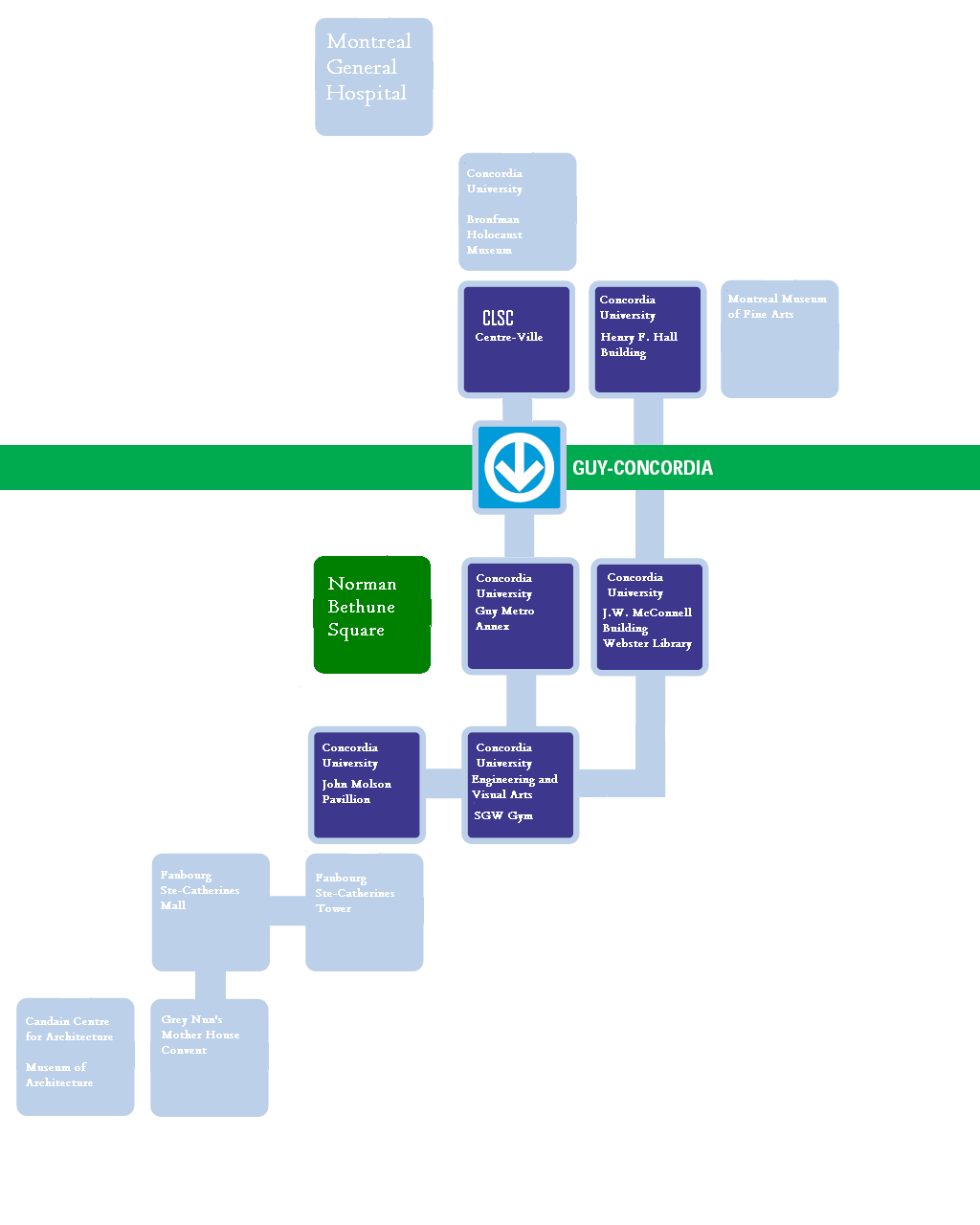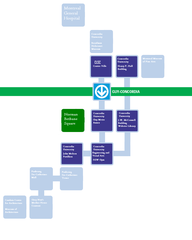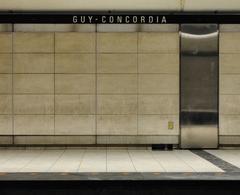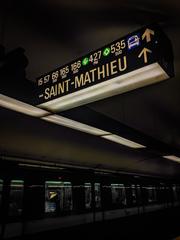
Guy-Concordia Montreal Visiting Guide: History, Visitor Tips, and Tickets
Date: 15/06/2025
Introduction
Guy-Concordia stands as one of Montreal’s most vibrant neighborhoods, seamlessly blending rich historical heritage, academic excellence, and dynamic urban life. Anchored by the Guy-Concordia Metro station and Concordia University’s Sir George Williams Campus, the area offers visitors a compelling mix of Victorian-era architecture, innovative urban planning, world-class cultural events, and an unmistakably student-friendly atmosphere. Whether you’re a history buff, a food enthusiast, or a festival-goer, Guy-Concordia serves as a gateway to downtown Montreal’s best experiences (Wikipedia: Guy Street; Concordia News).
This comprehensive guide will take you through the evolution of Guy-Concordia, its major attractions, transportation, accessibility, insider recommendations, and everything you need to plan an enriching visit.
Table of Contents
- Introduction
- Historical Evolution
- Institutional and Cultural Landmarks
- The Montreal Metro and Urban Transformation
- Quartier Concordia: Urban Renewal and Visitor Experience
- Practical Visitor Information
- Key Historical Milestones
- Frequently Asked Questions (FAQ)
- Visuals and Media
- Summary & Recommendations
- References
Historical Evolution
Early Beginnings and Naming
The roots of Guy-Concordia trace back to 1817, when Guy Street (rue Guy) was named after Étienne Guy, a notary and member of the Lower Canada Assembly who donated the land for the street. This pivotal act established an important link between Montreal’s Faubourg Saint-Joseph and Saint-Antoine neighborhoods, setting the stage for urban development (Wikipedia: Guy Street).
Throughout the 19th century, the area was characterized by Victorian residential buildings. As Montreal’s downtown expanded westward in the late 19th and early 20th centuries, the neighborhood’s density and commercial significance grew (Concordia News).
Institutional and Cultural Landmarks
The Grey Nuns and Early Institutions
The Grey Nuns (Sœurs Grises) established their convent at Guy and Dorchester (now René-Lévesque) in 1869, creating a spiritual and architectural landmark. The Motherhouse, later acquired by Concordia University in 2007, remains a testament to the area’s layered history (Wikipedia: Guy Street).
From 1898 to 1963, Her Majesty’s Theatre on Guy Street hosted opera, ballet, and concerts, further cementing the district’s cultural prominence (Wikipedia: Guy Street).
The Rise of Higher Education
The pivotal moment came with the rise of Sir George Williams University, whose Norris Building was constructed in 1955. The rapidly growing student population led to the opening of the Henry F. Hall Building in 1966, coinciding with the inauguration of the Montreal Metro and the creation of De Maisonneuve Boulevard—a transformative urban planning move that redefined the neighborhood (Concordia News).
In 1974, Sir George Williams University merged with Loyola College to become Concordia University, which continues to shape the area’s identity through its academic, cultural, and architectural presence (Wikipedia: Guy Street).
The Montreal Metro and Urban Transformation
Guy-Concordia Metro Station
Opened in 1966 as part of Montreal’s original metro network, Guy-Concordia station was designed by architect J.A. Chicoine. Originally named “Guy,” it was renamed “Guy-Concordia” in 1987 to honor the university’s significance (STM Info; Metro Fandom).
The station is a bustling hub connecting downtown Montreal via the Green Line and is among Montreal’s busiest, ranking in the top five for passenger traffic. Its entrances are seamlessly integrated into university and commercial buildings, providing direct access to both campus life and the city’s RÉSO underground network (Metro Fandom).
De Maisonneuve Boulevard
De Maisonneuve Boulevard, created alongside the metro in 1966, replaced five blocks of Victorian homes to form a modern thoroughfare. Today, it is the backbone of Quartier Concordia, hosting academic, residential, and commercial growth (Concordia News).
Quartier Concordia: Urban Renewal and Visitor Experience
Guy-Concordia has been at the forefront of urban renewal, thanks to the Quartier Concordia project—a partnership between Concordia University and the City of Montreal. Recent improvements include pedestrianized spaces, public art, enhanced green areas, and innovative campus architecture, creating a lively, walkable environment (Concordia News).
Attractions & Events
- Grey Nuns Motherhouse: Guided tours available by appointment, showcasing the building’s history and architecture.
- Leonard & Bina Ellen Art Gallery: Contemporary exhibitions, open Tuesday–Saturday, 11:00 AM–6:00 PM (Concordia University).
- Cabot Square & Dorchester Square: Green spaces host public art, seasonal events, and relaxation spots.
- Sainte-Catherine Street West: Montreal’s main commercial artery for shopping, dining, and nightlife.
- Cultural Venues: Cinéma du Parc and Théâtre Sainte-Catherine offer independent films and live performances.
Special Events
The neighborhood hosts an array of festivals, student events, and public lectures year-round. Concordia frequently organizes guided walking tours, while proximity to the Quartier des Spectacles ensures easy access to major city festivals like Just for Laughs and the Montreal International Jazz Festival (Dream Plan Experience).
Practical Visitor Information
Transportation
- Metro: Guy-Concordia station operates daily (approx. 5:30 AM–12:30 AM). Tickets are available at station kiosks; OPUS cards recommended for frequent transit (STM Info).
- Bus: Multiple STM lines serve the area, including night buses.
- Cycling: BIXI bike-sharing stations and cycling lanes are abundant.
- Parking: Public lots and metered street parking; EV charging stations available.
Accessibility
- The station and most public buildings are wheelchair accessible, with elevators and ramps.
- The area is highly walkable; university and commercial spaces offer free Wi-Fi and amenities.
Visitor Services
- Tourist Info: Mobile Welcome Office (May–September).
- Restrooms: Located in malls and university buildings.
Safety
- The area is safe and well-patrolled; standard urban precautions apply, especially at night.
Local Tips
- Most venues are bilingual (English/French); a “Bonjour” is appreciated.
- The best time to visit is during academic and festival seasons (late spring to early fall).
- Sainte-Catherine Street offers diverse food and retail options for all budgets.
Key Historical Milestones
- 1817: Guy Street named after Étienne Guy (Wikipedia: Guy Street).
- 1869: Grey Nuns establish their convent.
- 1898–1963: Her Majesty’s Theatre operates as a cultural hub.
- 1955: Norris Building constructed for Sir George Williams University.
- 1966: Opening of Hall Building, Guy Metro station, and De Maisonneuve Boulevard.
- 1974: Concordia University is formed.
- 1987: Metro station renamed Guy-Concordia.
- 2007: University acquires Grey Nuns Motherhouse.
Frequently Asked Questions (FAQ)
Q: What are Guy-Concordia metro station’s hours?
A: Approximately 5:30 AM to 12:30 AM daily; hours may vary on holidays (STM Info).
Q: Is the metro station accessible for people with mobility needs?
A: Yes, the station is fully wheelchair accessible.
Q: Are guided tours available?
A: Seasonal walking tours are offered; contact Concordia University or local tourism offices.
Q: Are parks like Cabot Square free?
A: Yes, all local parks are free to visit.
Q: How can I buy tickets for metro and events?
A: Metro tickets and passes are sold at station kiosks. Event tickets can be purchased online or at venue box offices.
Q: Is bike rental available?
A: Yes, BIXI bike-sharing stations are conveniently located nearby.
Visuals and Media
Alt text: Entrance to Guy-Concordia Metro Station in Montreal
Alt text: Map showing Guy-Concordia Station location in downtown Montreal
Explore more photos and virtual tours at the STM official gallery.
Summary & Recommendations
Guy-Concordia is a microcosm of Montreal’s diversity and innovation, blending its 19th-century roots with the energy of a contemporary university district. The area is a nexus for transit, culture, and community—ideal for urban explorers, students, and tourists alike. Visit for the history, stay for the food, arts, and festivals, and enjoy seamless access to the broader city via metro and bus.
For a deeper experience, download the Audiala app for guided audio tours and up-to-date event listings. Follow local channels for insider tips, and don’t miss the neighborhood’s hidden gems—from cozy cafés to historic landmarks.
References
- Wikipedia: Guy Street
- Concordia News
- STM Info
- Metro Fandom
- Concordia University
- Dream Plan Experience






























































































































